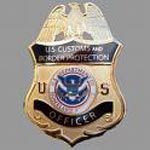 A spokeswoman for the Washington headquarters of U.S. Customs and Border Protection (CBP) says the drawing of weapons in the ramp inspection of an aircraft in Long Beach, Calif., last month was justified but not “normal.” Kelly Ivahnenko also told AVweb that general aviation pilots can expect more ramp checks by CBP agents thanks to the newly-instituted Electronic Advance Passenger Information System (eAPIS). She stressed it’s unlikely many of the checks will have the level of intensity employed May 22 with Long Beach, Calif., pilot David Perry and his three passengers. Ivahnenko said in an interview on Tuesday that there was a “heightened alert” involved in the Long Beach operation but she also said she could not discuss the circumstances that led to a more aggressive posture than normal by the CBP and local police. She also said that while eAPIS had nothing to do with the Long Beach inspection, information provided through eAPIS could result in more frequent GA inspections. The system, which involves the online filing of flight and passenger information for transborder flights, became mandatory on May 18. In an interview and podcast with AVweb, Perry said he and his passengers were put in unnecessary peril by gun-wielding enforcement officials. Ivahnenko stressed Perry’s experience is not what most pilots should expect if they’re checked by the CBP. “This I would not classify as common or routine,” she said. She said the Long Beach action was justified, even though the search turned up nothing illegal. “While the involvement of more than one law enforcement agency and the heightened alert of the situation were slightly unusual, it is within (CBP’s) authority to inspect inbound and outbound travelers, vehicles, planes, cargo, etc.,” she told AVweb. She also said that only the Long Beach police officers assisting the operation actually drew weapons and CBP agents kept theirs holstered, something Perry vehemently disputes. “Every one of them had their weapons out,” Perry said.
A spokeswoman for the Washington headquarters of U.S. Customs and Border Protection (CBP) says the drawing of weapons in the ramp inspection of an aircraft in Long Beach, Calif., last month was justified but not “normal.” Kelly Ivahnenko also told AVweb that general aviation pilots can expect more ramp checks by CBP agents thanks to the newly-instituted Electronic Advance Passenger Information System (eAPIS). She stressed it’s unlikely many of the checks will have the level of intensity employed May 22 with Long Beach, Calif., pilot David Perry and his three passengers. Ivahnenko said in an interview on Tuesday that there was a “heightened alert” involved in the Long Beach operation but she also said she could not discuss the circumstances that led to a more aggressive posture than normal by the CBP and local police. She also said that while eAPIS had nothing to do with the Long Beach inspection, information provided through eAPIS could result in more frequent GA inspections. The system, which involves the online filing of flight and passenger information for transborder flights, became mandatory on May 18. In an interview and podcast with AVweb, Perry said he and his passengers were put in unnecessary peril by gun-wielding enforcement officials. Ivahnenko stressed Perry’s experience is not what most pilots should expect if they’re checked by the CBP. “This I would not classify as common or routine,” she said. She said the Long Beach action was justified, even though the search turned up nothing illegal. “While the involvement of more than one law enforcement agency and the heightened alert of the situation were slightly unusual, it is within (CBP’s) authority to inspect inbound and outbound travelers, vehicles, planes, cargo, etc.,” she told AVweb. She also said that only the Long Beach police officers assisting the operation actually drew weapons and CBP agents kept theirs holstered, something Perry vehemently disputes. “Every one of them had their weapons out,” Perry said.
Perry also said that while most of those who surrounded his airplane carried pistols, he saw at least one assault rifle carried by a CBP agent. Ivahnenko said the CBP agents involved are not equipped with assault rifles and the tactical team that does carry them was not in Long Beach that day. Perry adamantly disagrees with Ivahnenko regarding the presence of assault rifles. While Ivahnenko maintains CBP agents did not draw weapons, she said it was their idea that the Long Beach police officers have their guns out. “We are taking responsibility as the lead agency who requested assistance from Long Beach,” she said. “That was simply part of the security protocol for that part of the inspection.” Perry said he and his passengers were ordered at gunpoint to first put their hands on their heads and then get out of the airplane one by one. They were individually questioned and they and the contents of the plane were searched. Perry said he’s considering filing a civil rights action against the CBP and has been told by an attorney that the search may have violated the 4th Amendment of the Constitution that limits search and seizure powers of the government. Ivahnenko said the controversy stirred by the Long Beach inspection may prompt an outreach campaign by the CBP to address concerns being expressed by the general aviation community about the new border-crossing rules.


































